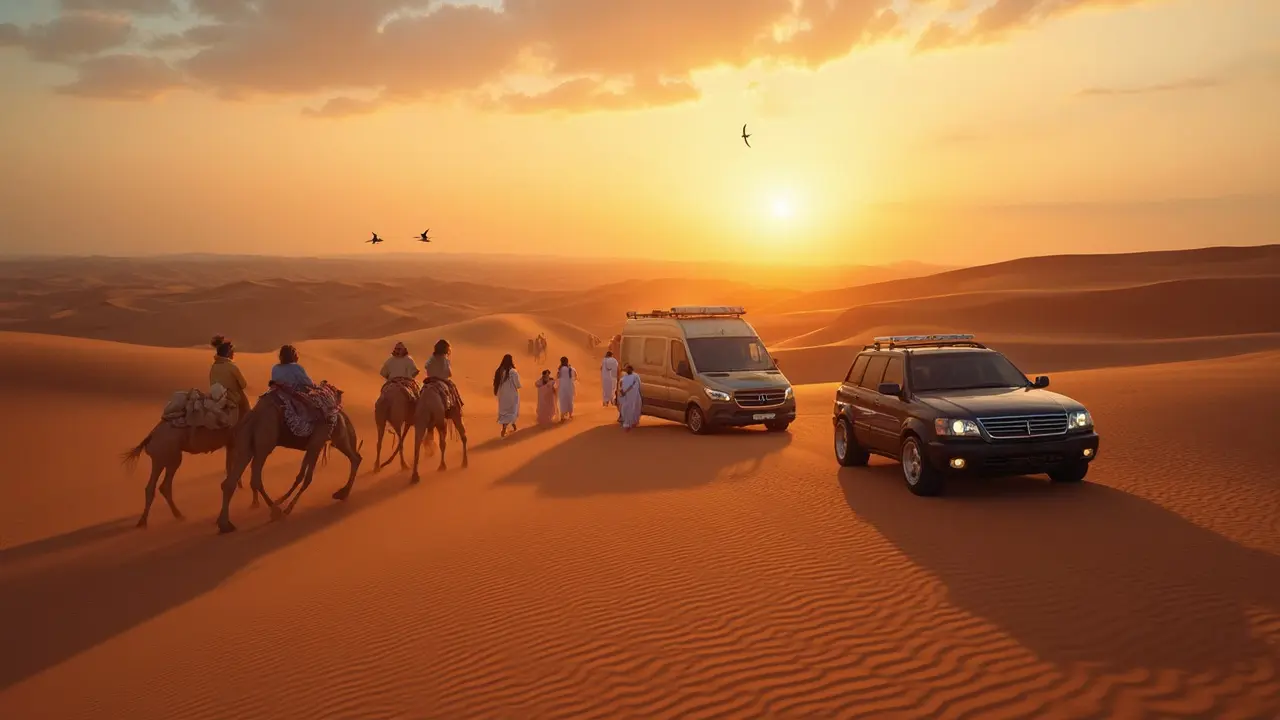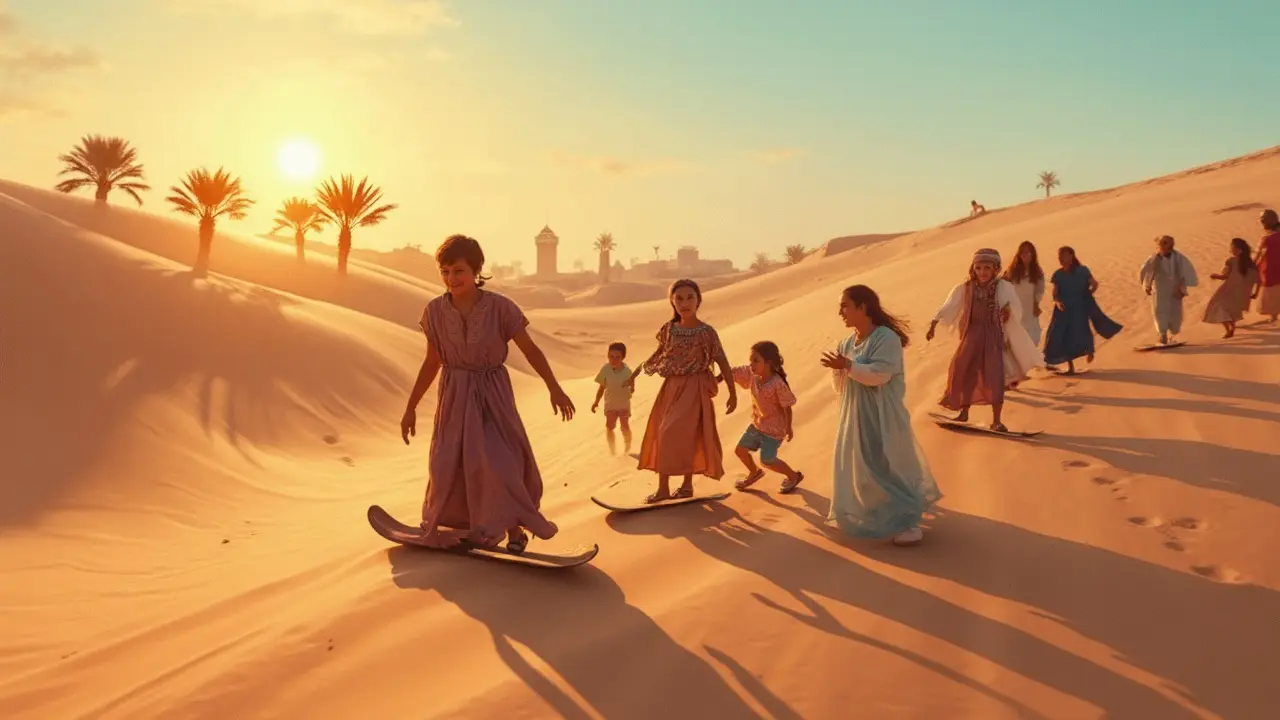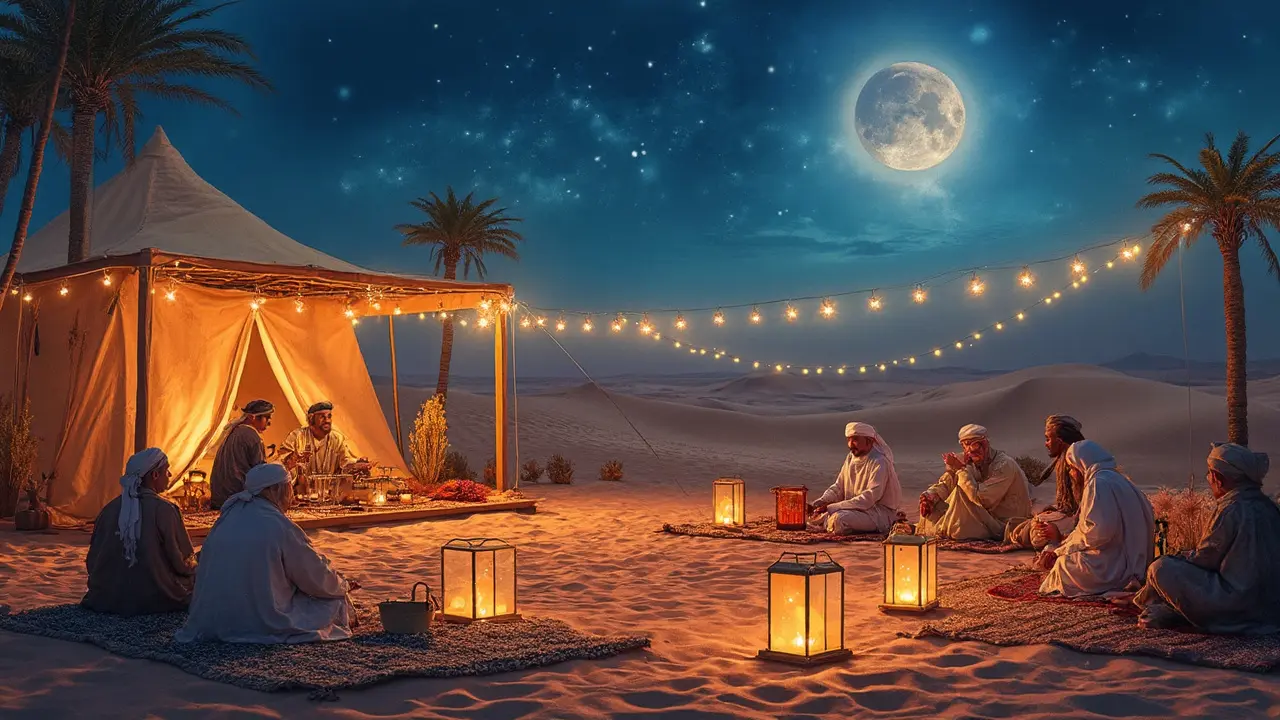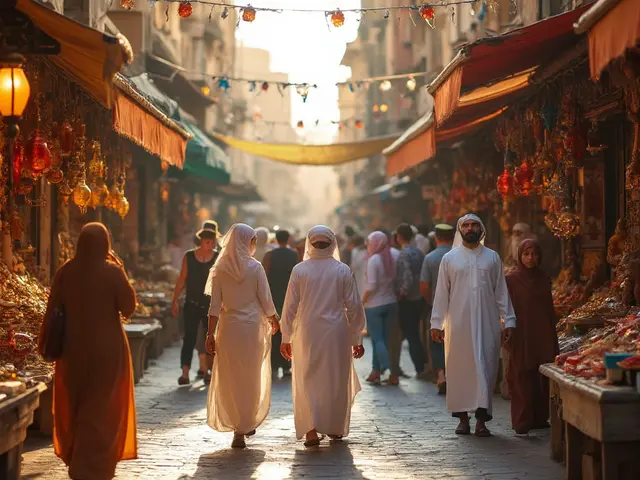
Dubai isn’t just about skyscrapers and fancy brunches—the real excitement sits right on the city’s doorstep, in the endless stretch of sand that makes up the UAE deserts. If you’ve only seen the dunes from a distance, you’re missing out. Dubai desert safaris are not just tourist attractions; loads of residents in Dubai swear by at least one annual trip out into the wild, whether it’s blasting over glowing red dunes, spotting elusive Arabian oryx, or feasting under a sky full of stars.
It isn’t just about the thrill rides (though, trust me, those 4x4 dune bashings can make even seasoned adrenaline junkies laugh-cry). Companies like Platinum Heritage and Arabian Adventures go all out with eco-friendly tours and luxury touches, and there’s a ton for families too. If you bring kids, look for outings that include camel rides, falconry demonstrations, or sandboarding—Zinnia’s favorite part is trying to keep her shoes on during sand sliding contests.
But before you book, think about timing. Dubai’s summer heat turns those dunes into a giant oven, so the sweet spot runs from October to April. And respect for local customs is important. Modest, breathable clothing is key—save the tank tops for the hotel pool. Plus, no matter how Insta-worthy the scene, steer clear of bringing drones without a permit; the UAE is strict about airspace.
Ready to see which spots stand out? Whether you want privacy, glam camp vibes, or all-out action, there’s a safari that fits. Grab your hat, bring extra water, and leave the high heels at home. Here’s your quick start to the best desert journeys waiting around Dubai.
- Red Dunes of Al Marmoom
- Dubai Conservation Reserve
- Liwa Oasis: UAE's Empty Quarter
- Al Faya Desert and Sunset Views
- Arabian Nights Experiences
Red Dunes of Al Marmoom
Ask around Dubai, and the Al Marmoom red dunes always come up as the go-to spot for a real desert safari. These dunes are close—just a 40-minute drive from Downtown Dubai—which means you don’t spend half a day getting there and back. What makes them stand out? It’s that deep, copper-red sand you see all over Instagram. The colors hit extra hard at sunrise and sunset, so if you’re hunting for good photos, shoot for those times.
The Al Marmoom Desert Conservation Reserve sits nearby. It’s not just any patch of sand; this area is managed to support Dubai’s wildlife and plants, so you might actually spot Arabian gazelle or oryx if you keep your eyes open. A lot of tours here use marked tracks, which means less impact on the environment but still plenty of space for wild 4x4 rides, dune bashing, and even fat-biking on the sand.
For first-timers, dune bashing is the classic pick. SUVs, roll cages, and expert drivers—some companies like Desert Safari Dubai and Murooj Al Marmoom have this down to an art. If you’re bringing kids or elders, check for ‘gentle dune’ options—these are easygoing and skip the gut-churning drops. Most safaris will also include sandboarding; it’s like snowboarding, just crunchier and warmer.
- Wear sunglasses. The glare and flying sand can sting.
- Bring water—don’t count on the tour operator to supply enough for the whole afternoon.
- Photography tip: Drones are banned without a special permit, so stick to phones or cameras.
- Book afternoon tours if you want to include a barbecue dinner, fire shows, and traditional tanoura dance.
If you want something a bit more chill, look for nature-focused safaris that glide through the reserve at slower speeds—with stops to chat about desert history, Bedouin culture, and the conservation work that actually keeps this part of Dubai special. And yeah, you’ll find dozens of outfits offering these tours, but for responsible eco-tours, Platinum Heritage is the name people trust.
So whether you’re after heart-pumping action or a mellow nature evening, the desert safari Dubai scene doesn’t get much more iconic than Al Marmoom’s flame-red dunes. Just don’t wear your best sneakers—red sand never really comes out.
Dubai Conservation Reserve
If you want a real taste of untouched desert right outside the city, the Dubai Conservation Reserve is a must. This place is Dubai’s first national park, set up to protect native wildlife and unique desert plants. It’s not just a patch of sand, either—it covers roughly 225 square kilometers, almost 5% of the whole emirate. For locals and expats who’ve had their fill of malls, this is where you come to actually unplug from city life.
You’ll spot Arabian oryx, gazelles, and even foxes roaming around. If you go on a morning safari, chances are high you’ll see animals chilling before the heat kicks in. This reserve is the only area in Dubai where you’ll see these kinds of numbers—it’s a real success story for wildlife recovery. Here’s a quick snapshot of what you might see on a typical wildlife drive:
| Animal | Chance of Sighting |
|---|---|
| Arabian Oryx | Very High |
| Sand Gazelle | High |
| Desert Fox | Moderate |
| Houbara Bustard (bird) | Low |
Only a handful of tour operators are licensed to run safaris here, and most use vintage Land Rovers or luxury 4x4s. The difference? With outfits like Platinum Heritage, you get guides who really know their stuff—no cheesy stories, just real facts and smart answers to your kid’s (or your own) random questions.
Here’s why Dubai Conservation Reserve is crowd-pleaser material:
- desert safari Dubai feels truly exclusive—no random cars tearing up the dunes around you.
- Desert camps offer local snacks, traditional music, and sustainable experiences, including Bedouin-style breakfasts that taste nothing like a hotel buffet.
- Some packages offer falconry, a truly iconic part of UAE heritage that’s hard to see up close elsewhere.
- If you’re into star-gazing, night safaris serve up a sky packed with constellations. No city light pollution here.
Few quick tips before you go:
- Book in advance—slots fill fast, especially on weekends and during tourist season (November to March).
- No need to overload on snacks; most tours keep you stuffed with Arabic sweets and refreshments.
- Bring a camera, but take breaks to actually look around. Photos are awesome, but some memories are just better live.
Dubai Conservation Reserve really nails what a desert experience should be. It’s about more than just sand: it’s nature, heritage, and proper escape, all rolled into one easy drive from downtown.

Liwa Oasis: UAE's Empty Quarter
Liwa Oasis is on another level when it comes to desert safari Dubai experiences. Tucked deep into Rub' al Khali—the Empty Quarter—Liwa feels truly remote. This is the world’s biggest uninterrupted sand desert, with dunes reaching up to 300 meters tall. Just getting there from Dubai is an adventure: you’ll need to block at least three hours for the drive, but loads of residents say it’s totally worth the road trip, especially if you’re after bragging rights and epic photos.
Liwa’s dunes are famous for their orange-red glow, especially at sunrise and sunset. This is the spot for hardcore off-roaders who want a proper test—not your average drive up the highway. If you’re not comfortable driving across soft sand, there are plenty of tours run by brands like Qasr Al Sarab Desert Resort and Emirates Tours which provide 4x4s, pro drivers, picnic set-ups, and the works. The safaris here often include things you won’t see closer to Dubai, like star-gazing by the campfire or meeting real Bedouin families who live in the oasis.
Because Liwa is much less crowded, the wildlife here is surprising. Expect to spot wild camels, Arabian oryx, and loads of desert foxes, especially if you set out early or brave a night safari. But plan ahead: there aren’t corner stores or quick cafés. Water, snacks, and sun protection are mandatory—don’t expect to just “pop out” for food or supplies.
| Key Facts About Liwa Oasis | Details |
|---|---|
| Distance from Dubai | Approx. 330 km (about 3-3.5 hours by car) |
| Best Season | November to March (cooler temps, less risk of sandstorms) |
| Famous Dune | Moreeb Dune—one of the highest in the world (300m+) |
| Popular Activities | Dune bashing, camel trekking, desert camping, sandboarding |
| Travel Tip | Always travel in a convoy or with a guide—it’s easy to get lost |
Before you head out, let people know your route and timing. Mobile reception can be patchy in parts of the Empty Quarter. If you’re with kids or older folks, double-check your tour’s safety record—getting stuck in the sand is practically a Liwa ritual, but it’s only fun if help is close. For anyone after an authentic, wild desert experience, Liwa will deliver way more than just another photo for your feed.
Al Faya Desert and Sunset Views
If you’re hunting for those golden hour vibes and want to skip the crowds, Al Faya Desert is a top pick, especially for folks who’ve already checked out Dubai’s main desert safari Dubai hubs. It’s about an hour from downtown Dubai—take the E611 toward Sharjah, and you’ll see the iconic fossil rock hills rising from the sand.
This spot is a go-to for weekend road-trippers, off-roaders, and anyone after uninterrupted sunset horizons. The landscape is a mix of rusty-red dunes and rugged rock, making it especially cool for landscape photography or just chilling with friends and family. If you’ve never been, the best time to arrive is after 4 pm—temperatures drop, and the sunsets are ridiculous, usually hitting their peak just before 6:30 pm during the spring season.
If you’re planning a trip out here, here are a few things to keep in mind:
- There aren’t fancy facilities. Bring your own water, food, and a rubbish bag (leave no trace—seriously, fines are steep for littering).
- The dunes can be steep. Only experienced drivers should tackle the serious off-roading. If you’re a newbie, book a guided tour with a local company like Sand Sherpa.
- If you want something more relaxed, lots of families just set up pop-up tents or picnic mats—watch for barbecue smoke signals to find the best community vibes.
- The area has patchy mobile signal. Download your maps and let someone know before you head out, just in case.
Al Faya is also known for its unique star-gazing potential and meteor showers—local astronomy groups sometimes hold events here, especially in August for the Perseids. If you’re into photos, aim for early evening as the west-facing dunes get the best color splash. Here’s a quick cheat sheet on what to pack and sunset timings most of the year:
| Month | Sunset Time | Peak Temp (°C) |
|---|---|---|
| January | 5:47 pm | 23 |
| April | 6:37 pm | 32 |
| August | 6:53 pm | 43 |
| November | 5:34 pm | 28 |
No entry fees, no tour buses, just open sand and fading sunlight. Grab a blanket, charge your phone for those group shots, and if you bring kids, double-check everyone’s water bottles. Al Faya really proves you don’t have to go far from Dubai to get a real taste of desert calm.

Arabian Nights Experiences
If you want your desert safari Dubai trip to feel like you’ve stepped into a storybook, these Arabian Nights experiences absolutely nail it. They’re not just about racing down dunes. Think open-air tents, lantern-lit camps, and the kind of food that never seems to run out—plus live music and dance, all under Dubai’s starlit sky.
Most of the big names in Dubai’s safari scene go all-in on this vibe. Companies like Desert Safari Dubai, Platinum Heritage, and Arabian Adventures run evening tours with big, comfy majlis seating, low tables, and carpets you’ll wish you could take home. You can expect an Arabic BBQ buffet (usually with fresh grilled meats, salads, flatbreads, and sweets like luqaimat). And don't worry if you’re picky—vegetarian options are common now. For families, these camps can be a paradise, with henna painting, shisha (for adults), camel rides, and cultural shows that actually get the kids mesmerized.
Here’s a usual checklist of what a solid Arabian Nights package in Dubai covers:
- Pick-up and drop-off at your hotel or neighborhood.
- Dune bashing session with an experienced driver.
- Short camel ride (expect queues at busy times).
- Live entertainment—usually including belly dancers, tanoura (whirling dervish) performers, and sometimes fire shows.
- Buffet-style dinner with unlimited soft drinks and coffee.
- Henna painting and traditional dress-up photo ops.
If you’re feeling spendy, you can book a VIP tent or private camp—sometimes these come with your own butler and chef, which is as extra as it sounds. Popular spots like the Al Marmoom Desert Conservation Reserve often combine the glam camp experience with a bit of nature: chances to spot wildlife, or guided night walks among the dunes.
Local rules still apply, so skip the alcohol (it’s usually not served, and open drinking in public is a no-go in Dubai). Most shows are family-friendly, but during Ramadan or public holidays like UAE National Day, expect some changes—there might be less music and dancing out of respect for local traditions.
For a quick comparison, here’s what you can expect from the biggest tour companies:
| Provider | Price per Adult (AED) | Duration (Hrs) | VIP Option |
|---|---|---|---|
| Platinum Heritage | 595+ | 7 | Yes |
| Arabian Adventures | 415+ | 6 | Yes |
| Desert Safari Dubai | 150+ | 6 | Yes |
Booking tips? Go mid-week if you can. It’s less crowded, especially outside of peak tourist season, and guides often have more time for stories and Q&A. Wear sandals or open shoes—they’re much easier for kicking off on carpets. And always bring a light jacket; you’d be shocked how chilly Dubai’s sand gets after sundown.



